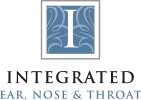10 WAYS TO PREPARE FOR ALLERGY SEASON
Signs of spring are everywhere; and after a long, cold winter, these signals of the warmer season are welcome. However, not everyone is comfortable breathing in the fresh spring air. Those who suffer from allergies tend to dread this time of year. If the abundance of pollen doesn’t agree with you, here are 10 ways to prepare for allergy season.
1. BE PREPARED
Getting started early is the best thing you can do to prevent the worst of your symptoms. Even in the months before spring, you can start a regimen of allergy shots to help your body be prepared for exposure during the most difficult months. See your ENT specialist in the early spring to get ahead!
2. MINIMIZE EARLY EXPOSURE
The instinct to throw open your windows during the first bout of warm weather is strong. However, this can introduce pollen and other allergens into your home where they can remain and cause flare-ups. If you can avoid this during the highest pollen count days, you can help manage your symptoms.
3. PLAN YOUR DAY
There are daily peak hours for plants to release their pollen. Between 5 and 10 in the morning hold the highest levels of pollen, so you should plan your outdoor time accordingly. On rainy and cooler days, pollen is usually washed to the ground, so typically you will have a 24 to 48-hour reprieve. If you check pollen counts from your local weather service before leaving the house, you can make sure you’re prepared for symptoms.
4. USE YOUR GLASSES
Pollen is attracted to contact lenses, so try to only wear them on days of low pollen count. Itchy eyes is a symptom of allergies, and contact lenses can exacerbate this problem even more.
5. BUY LOCAL HONEY
It may seem counterintuitive, but eating the product created by your local bees can help decrease allergic reactions. Other allergy-fighting foods include apples, pineapples, and fatty fish such as mackerel and salmon.
6. KEEP CLEAN
Your clothing, skin, and hair can carry the outdoor pollen into your house. As soon as you get inside, remove all clothing and take a shower to prevent spread throughout your home. If you start doing this early and often, you can provide yourself some symptom relief in your home environment.
7. CHECK FILTERS
Clean your air filters often, or use an air purifier. Pollen and mold get trapped in filters, so it’s important to clean them before and during allergy season. Keeping your filters clean will help prevent pollen from spreading through your home.
8. START SPRING CLEANING EARLY
Dust, mold, and pollen can get trapped in ceiling fans, vents, and between piles of clutter. Before allergy season gets under full swing, clean up to prevent the circulation of extra dust that builds up throughout the winter.
9. MAKE ALTERNATE PLANS
Whatever your best strategy is for dealing with allergies, be prepared. Make sure you are stocked up with what you need, like antihistamines, or schedule an allergy shot appointment with your ENT specialist. When pollen count gets high, you can reduce your symptoms by having what you need on hand.
10. TRACK POLLEN LEVELS
Tree and grass contribute largely to the pollen count. Most weather apps record the current local levels, so knowing today’s pollen count will help you to know what to expect. You can adjust your strategy daily to fit your schedule.
SCHEDULE AN APPOINTMENT
Whatever your needs for spring allergies, our team is here to help. To meet with our ENT specialists and get some relief, we invite you to contact our Lone Tree office by calling or filling out our online form.







